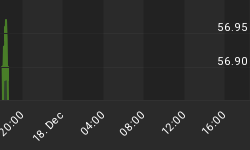8/25/2010 9:12:03 AM
European markets slide significantly as worries over debt continue to be a concern...
Recommendation:
Take no action.
Daily Trend Indications:

- Positions indicated as Green are Long positions and those indicated as Red are short positions.
- The State of the Market is used to determine how you should trade. A trending market can ignore support and resistance levels and maintain its direction longer than most traders think it will.
- The BIAS is used to determine how aggressive or defensive you should be with a position. If the BIAS is Bullish but the market is in a Trading state, you might enter a short trade to take advantage of a reversal off of resistance. The BIAS tells you to exit that trade on "weaker" signals than you might otherwise trade on as the market is predisposed to move in the direction of BIAS.
- At Risk is generally neutral represented by "-". When it is "Bullish" or "Bearish" it warns of a potential change in the BIAS.
- The Moving Averages are noted as they are important signposts used by the Chartists community in determining the relative health of the markets.
Current ETF positions are:
In Cash.
Daily Trading Action
The major index ETFs opened about one percent lower and continued to move lower until an economic report was released at 10:00am EDT. At that time, the major indexes moved immediately lower to the ultimate day's low before shifting within minutes to a gradual climb higher. The climb was fairly steady through the entire session until the last half hour so selling once again come to dominate the action and the final 15-minutes saw a break of the uptrend line which had support the major indexes during the day's rise. The Russell-2000 (IWM 59.63 +0.69) fell less on a percentage basis than the major indexes. The Semiconductor Index (SOX 318.41 -5.37) fell in proportion to the major indexes. The Bank Index (KBE 21.67 -0.47) lost more than two percent while the Regional Bank Index (KRE 21.32 -0.11) lost only one half of one percent. All equity indexes are in downtrend states with the major indexes BIAS looking to shift to BEARISH this week. The 20+ Yr Bonds (TLT 107.76 +1.70) moved to a new 52-week high as investors continue to flee to the relative safety of long bonds. NYSE volume was average with 1.167B shares traded. NASDAQ share volume was average with 2.107B shares traded.
There was a single economic report of interest released:
- Existing Home Sales (Jul) came in a 3.83M versus an expected 4.72M
That was a 27% drop from the prior month. June's Existing Home Sales were revised from 5.37M to 5.26M.
Even though the existing home sales were horrible, which helped the market to reach new intraday lows, the main culprit behind the move lower by U.S. markets was a debt downgrade by Standard and Poor's (S&P). S&P downgraded Ireland's Sovereign Debt from AA to AA-. Ireland's stock market fell -5.4% on the day.
Utilities (+0.3%) and Telecom (+0.3%) were able to move higher while the other eight economic sectors in the S&P-500 moved lower, led by Materials (-2.3%).
Implied volatility for the S&P-500 (VIX 27.46 +1.80) rose seven percent to its highest close since early July. Implied volatility for the NASDAQ-100 (VXN 28.47 +1.98) rose seven and a half percent for its highest close since just after Independence Day.
The yield for the 10-year note fell eleven cents to close at 2.50. The price of the near term futures contract for a barrel of crude oil fell $1.47 to close at $71.63.
Market internals were negative with decliners leading advancers 3:1 on both the NYSE and the NASDAQ. Down volume led up volume by 7:1 on the NYSE and by 5:1 on the NASDAQ. The index put/call ratio fell 0.33 to close at 1.24. The equity put/call ratio rose 0.34 to close at 0.73.
Commentary:
Tuesday's trading was ugly but it is apparent that there are still buyers out there. With the major indexes opening one percent lower, there were some buyers but the dominant emotion seems to be panic selling. Wednesday's open looks to be fractionally lower as investor's react to worse than expected Durable Goods reports. At some point, the major indexes will be ready to bounce but our view is that the major indexes will at least want to challenge recent lows, if not move lower.
We are now in cash, waiting for a high probability set-up to re-enter a trade. We went to cash in our value portfolio most of two weeks ago and will patiently wait to rebuild it when we believe the market is at a tradable bottom.
The Leading Indexes continue to lead the markets lower, but we would like to see Russell-2000 market participants get really bearish such that a bottom can be set. Until then, keep your powder dry and await our signal.
We hope you have enjoyed this edition of the McMillan portfolio. You may send comments to mark@stockbarometer.com.















